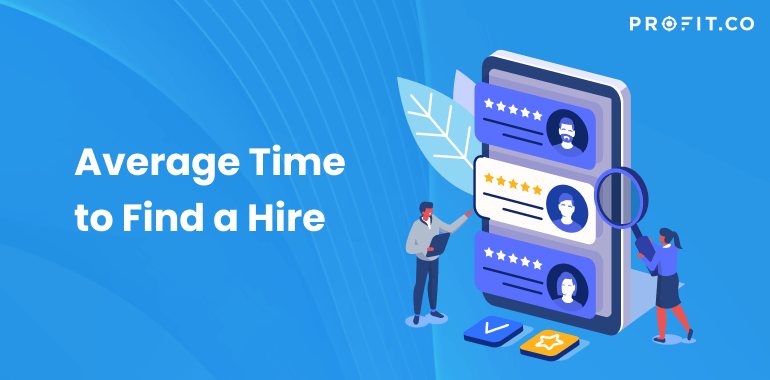OKRs are the most prominent task and performance management tool that allows organizations to manage the overall performance of the employees. The HR department being the backbone of an organization, surely needs One of the most important recruiting metrics that need focus and attention to build your business empire is the analysis of the average time taken to find a hire. Entrepreneurs, recruiters, Corporate owners, are all dependent on the data of these metrics as it points actionable insights.
It’s as simple as this: the purpose of these recruiting metrics is to answer quintessential questions regarding your business’ operation. In regard to the average time to find a hire metric, this sheds some light on your company’s hiring process, outlining the way in which your recruiting team manages this.
Defining the Time to Find a Hire Metric
The hiring process can sometimes last between a couple of days or even a couple of months at times. Effectively, the industry in which your firm operates will widely influence this metric, as there are particular specifications for every industry. That being said, the time to find a hire represents the time it takes for your recruiting team to find the perfect candidate for a position.
At the same time, this metric outlines how fast you move to cull out the right person– as it matters a lot.
Some people use this metric interchangeably with another equally important metric – like, the average time taken to fill a position. In this view, we could define the time to find a hire as a specific number of days between a position that is open and the job offer that has been extended.
On the other hand, organizations can divide the time to find a hire from the time to fill, pointing to the fact that the time to hire a timeline commences when your best candidate applies or gets sourced. Overall, this would portray how quickly your hiring time functions after having identified the best potential candidate.
What Does This Metric Display?
So, what should your aim be: to have a short or long hiring process? mostly a shorter period of time. Cases, where the hiring process was short, implies that the screening of the candidate wasn’t thorough enough. Moreover, this increases the risk of making unsuitable hires. That is why you should analyze the quality of your hiring trends every now and then.
Also, you should focus on whether there are specific correlations between hiring qualified people after screening and hiring people right away.
Though the lesser time taken for hire seems to create a negative impact, you can always enhance your screening stage by assessing their skills of the candidate faster and smarter.
Some companies take more time to hire. They might use the chance of hiring a better candidate by using better hiring techniques.
In order to balance the time to hire for your industry, you should aim at making the hiring process as efficient as possible. At the same time, it might be a good idea to invest in hiring tools, which could bring positive results.OKR software like Profit.co helps you achieve your goal by managing all your metric needs at a single juncture.
